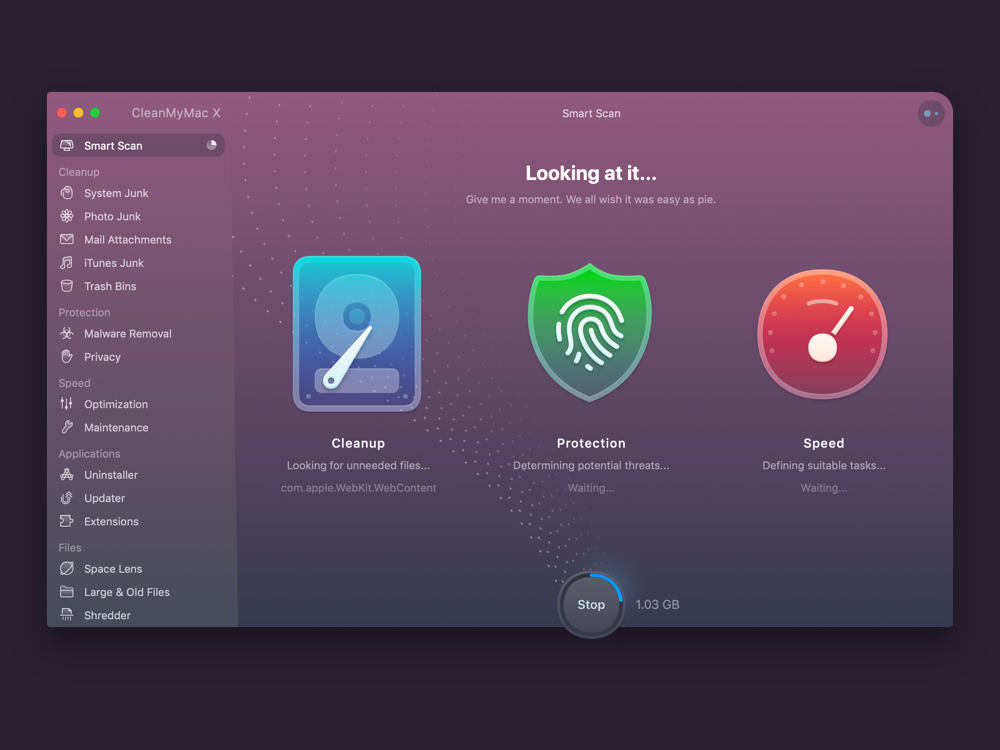Storage space on your Mac is precious, especially if you have a 128GB, or even a 256GB SSD. Your Mac can start to slow down and not perform as well when your storage is almost full, so it’s important to know what’s using up the space on your disk and clear out redundant files that build up over time.
Another reason you might need to free up space on your Mac is if you are attempting to install a new macOS update. Big Sur was notorious for its hefty storage requirements with some users faced with the challenge of freeing up almost 50GB of space in order to install it. We had that exact problem – read Big Sur too big for 128GB Mac.
Faced with the need to make space on your Mac you will no doubt be considering what you can delete. You might be assuming the worst and preparting to remove some of your photos, videos, music and documents – but then you stumble upon an allocation of something called Other storage that is taking up numerous gigabytes on your drive and wonder whether you can free up space by deleting Other.
In this article we will answer the questions: what is Other in Mac storage, can you delete Other storage, and should you delete Other? And, most crucially we’ll explain how you can delete other storage on Mac?
What are Mac Other files?
When confronted with the need to free up storage on your Mac we’re guessing that your first port of call was About This Mac, where there is a handy tool to help you manage your storage – and it’s here that we’re assuming you saw the gigantic Other category.
If you weren’t already aware of the About This Mac view, you can use the tools accessed via About This Mac > Storage to see and manage what takes up all the types of storage on your Mac.
Get to this basic overview of what’s taking up the space on your Mac by following these steps:
- Click on the Apple Logo in the top left.
- Go to About This Mac.
- Choose Storage. Wait while it calculates.
- Eventually you will see a bar chart showing what types of files are taking up space on your Mac, similar to the image below. In our case, yellow is Photos, red is Apps, light blue is Messages, purple is Music, dark blue for Mail, light blue for iCloud Drive and grey for System. Other is the biggest consumer of storage in our case: 38.55GB
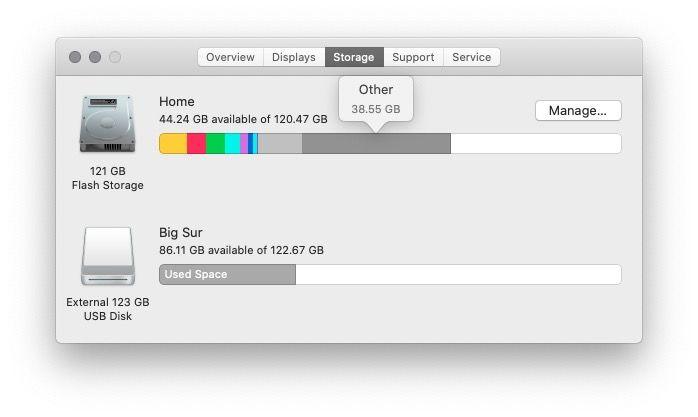
- Click Manage and you will see a screen like the one below. Here you can make various tweeks to your system, choosing to store files in iCloud, for example, or reviewing files to reduce clutter
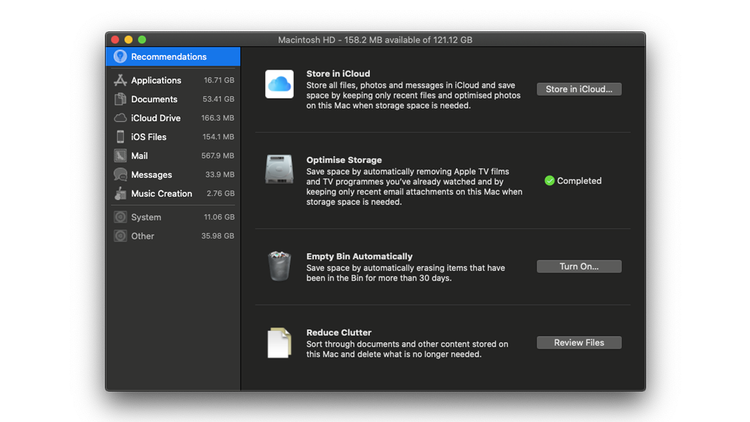
- However, you can’t access Other here at all – notice how it’s greyed out in the left hand column.
With Other such a large consumer of storage you are most likely wondering what exactly Other is.
While most of the main categories for file types is straightforward, the Other variety can be quite a mystery. If it isn’t music, documents, videos, photos or apps, what could it be?
The label ‘Other’ is applied by the system to files that don’t fit squarely into those types, such as installer packages, cache files, old backups, app extensions, temporary files and the like. Most are those that you don’t need any more, but they’ve got to be stored somewhere, so they get dumped in the Other category.
Promotion
CleanMyMac X | Look inside your macOS
- Buy from MacPaw
Find hidden junk, large old folders, background apps, and heavy memory consumers. Use CleanMyMac X to free up space on your Mac and tune it for maximum speed. The new version effectively blocks adware, browser pop-ups, and virus extensions.
How to find out what’s in Other
So now we know what types of files end up in Other, but how can we see what’s in Other on our Macs?
To see what’s using up all that Other space you’ll want to head to the Library folder, as that’s usually where the majority of Other content is stored.
Depending on how your system is set up, you might not be able to see the Library folder in your normal Finder window, so the easiest way to jump directly to it is to follow these steps:
- Open Finder.
- Click on the Go option in the menu bar.
- Select Go to Folder.
- Then type in ~/library and press enter.
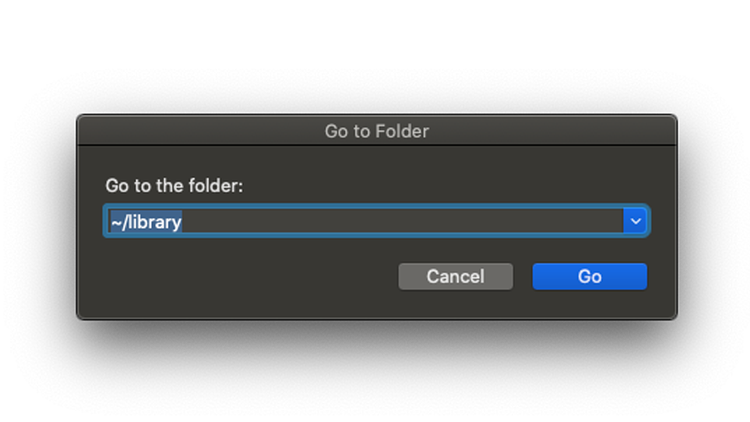
You’ll now be presented with a long list of folders, most of which will contain files deemed to be Other. Some good ones to start with are Caches and Application Support, but you’ll need to dig around to see which sub-folders within them are safe to remove.
Not all the files in Other will be visible. If you want to know how to see hidden files read: How to show hidden files on a Mac.
Before you start to delete anuthing please read on though – because deleting some of these files might affect the way your Mac works!
Can I delete Other files?
Yes, but you’ll need to be careful. Obvious things like .dmg files left over from installations are fine, but when you start getting into cache files and other more obtuse types you can quickly run into problems.
For example, deleting a cache from an old app that you no longer have won’t cause any issues. But should you delete one from an app you do use, then it will immediately forget all of your preferences and other details.
Basically, the rule of thumb is if you’re not sure what something is or what it does, leave it alone. Of course, as always, we strongly recommend that you run a complete backup of your system before you start removing anything, just to avoid disaster.
Just follow our step-by-step guide on how to backup a Mac and you can begin cleaning up your system knowing that you have a copy to fall back on should anything go awry.
How to delete Other files
When you’re in the Library folder Other files are deleted the same way as any normal file. Again, we warn you to be careful!
You could delete files by right clicking on them and choosing Remove to Bin (or Trash if you are in the US).
You’ll then need to empty the Bin/Trash afterwards or the file will still be on your Mac.
However, deleting certain files this way can leave some remnants on your Mac, so our preferred method for dealing with this kind of process though is to use one of the dedicated Mac cleaning software packages that help you avoid any costly mistakes.
Some of our current favourites are CleanMyMac X, MacCleaner 2 Pro, and Daisy Disk, but you’ll find a selection of other excellent options in our roundup of the best Mac cleaner software and optimization tools.
These often have system analysing features that can highlight redundant files while holding back on the ones that are still used on a regular basis. Then if you want to remove them it’s just a case of hitting one button rather than trawling through hundreds of sub-folders and hoping you don’t delete anything essential.
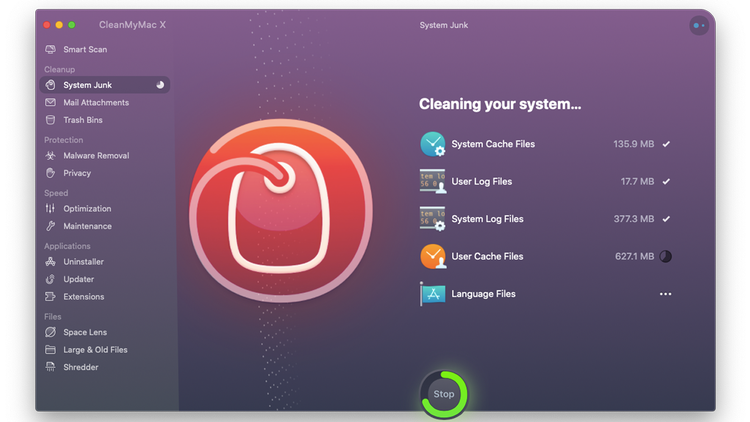
You’ll need to pay for them, as the trials usually only offer the ability to diagnose problems rather than fix them, but most are well worth the money when you consider the time and frustration that they can save.
We used Clean My Mac to delete files when we needed to free up space for macOS Big Sur. There are various options, we’ll run through some of them below:
Smart Scan – this will scan your Mac and eventually let you know what junk you can remove. You can click on Review Details to see what it is suggesting you delete. In our case these are Used Cache Files, Universal Binaries, System Log Files, Language Files, and so on, to the tune of 4.56GB. There’s also the option of removing Mail Attachments and emphying the Trash.
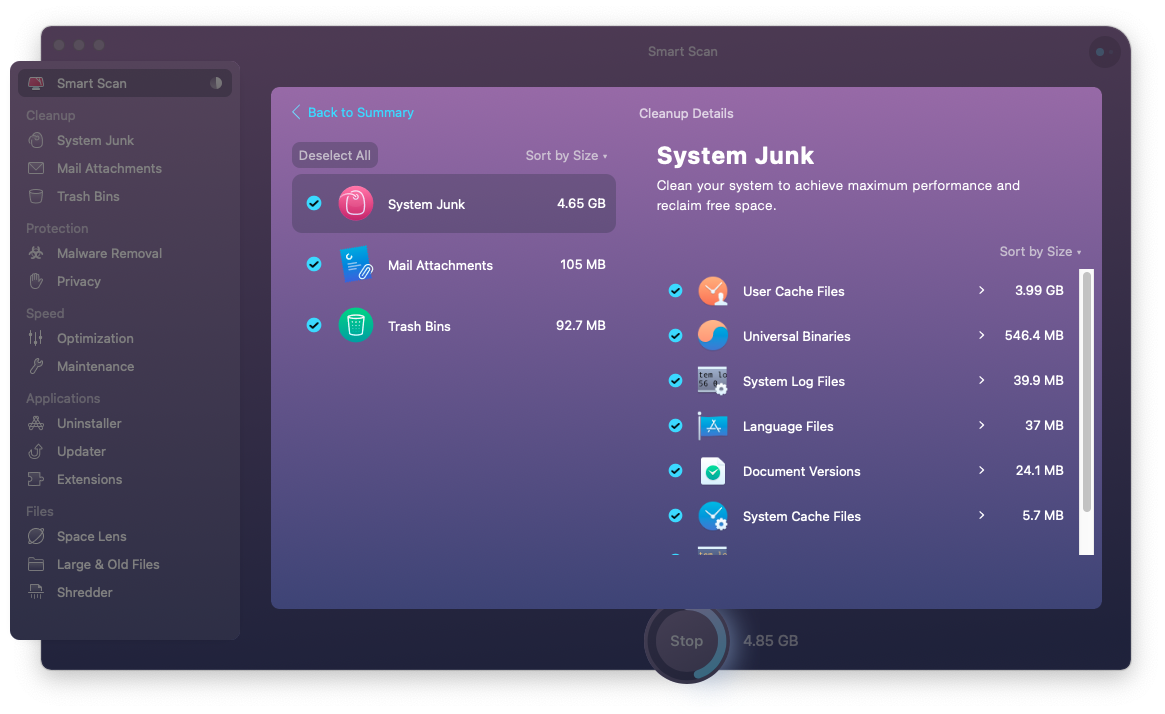
Large & Old Files – this lets you remove files you haven’t opened for a while. This accounted for 5.23GB in our case.
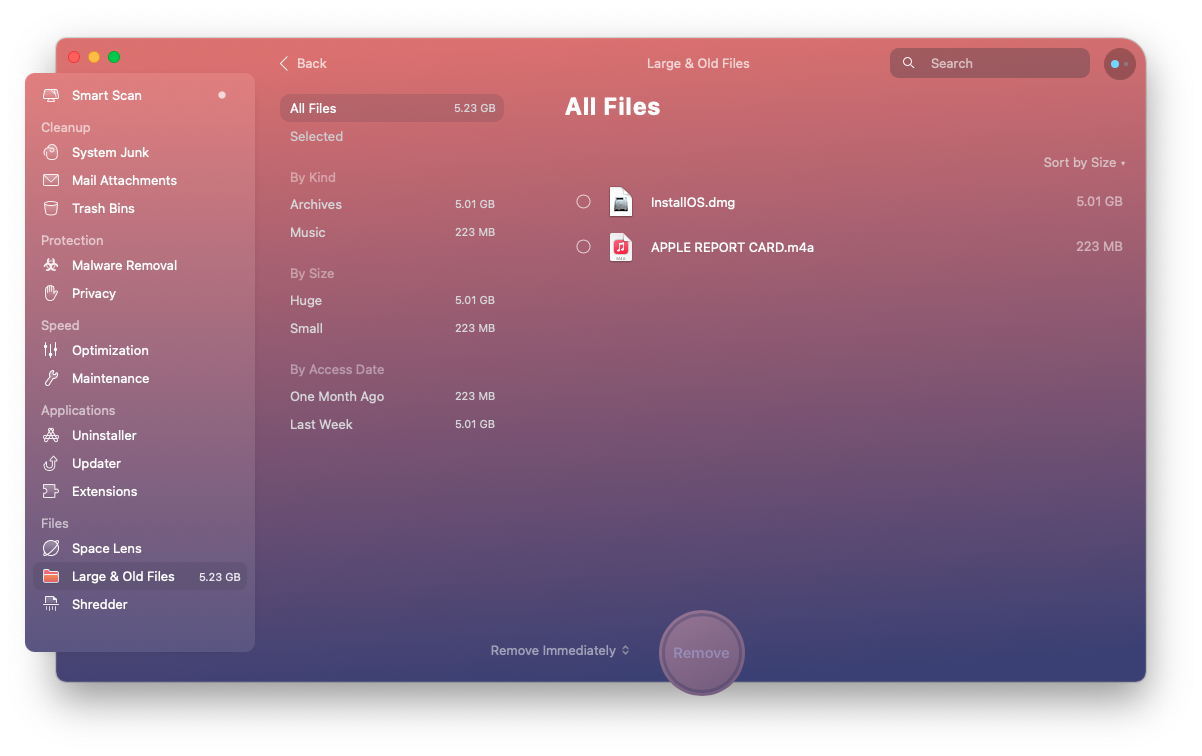
You can also use Clean My Mac to uninstall apps.
Clean My Mac is £29.95/$29.95 (usually £34.95/$34.95) if you buy the plan for one Mac. There is also a free trial. Download from developer MacPaw here.
Before buying any additional software or delving into the Library folder, take a look at our tips on how to free space on a Mac, as there might be some simple things you can do to claim back that valuable hard disk storage.

